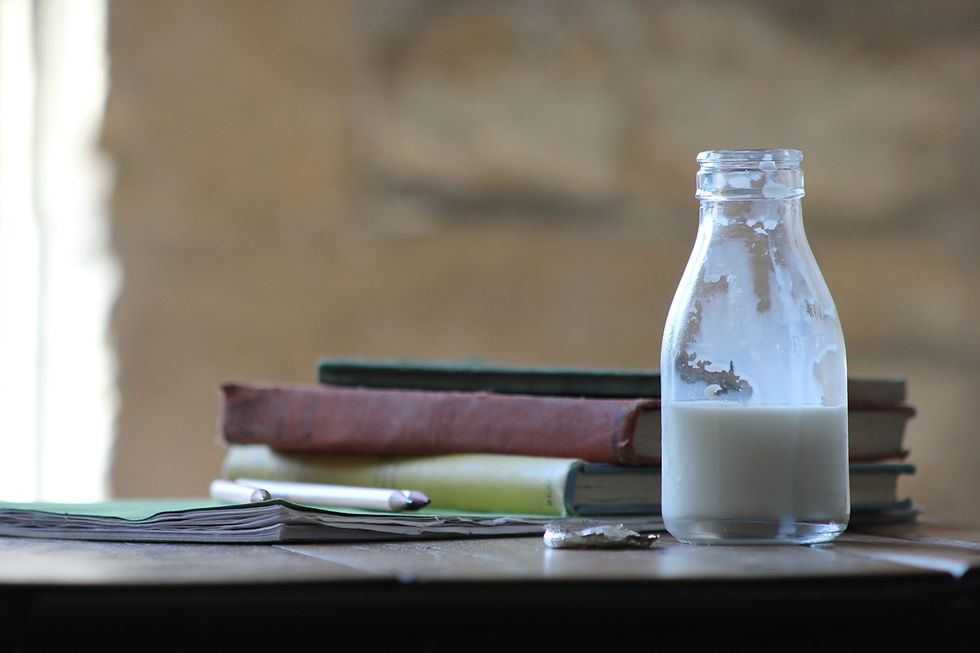Reinventing the wheel .... or just reusing it.
- storerphil
- Mar 11, 2024
- 4 min read

Having been involved in some of the most established and effective large scale reuse systems around, the subject of circular economy feels like home … safe , established, sturdy and indispensable to the way we will live.
Yet, it’s hard to believe the concept is not fully understood or adopted in our society – despite many well-known and established examples having existed and thrived for many years.
Returnable bottles used to carry milk to our doorsteps (in the UK at least) or beer and soft drinks to our tables. Where custom and practice (and deposits in some cases) ensure that the empty bottles were returned/collected to be washed and reused again. Little waste involved.
Similarly, still in Scandinavia and the Netherlands a plastic pop bottle commands a re-paid deposit on return so that the recycling stream can be fed and waste avoided.
Have we lost our way?
Reuse schemes have been replaced by disposable packaging at the mercy of the effectiveness of the separation of recycling streams during the waste collection process. On average (in the EU) the percentage of plastic packaging waste that is recycled hovers at around only 40% overall.
What. A. Waste.
An established approach, the “waste hierarchy” ranks, in order of environmental attractiveness, the actions that can be taken to remove or reduce waste. Think of it as basic common sense. The actions are in order of priority….
PREVENT/REDUCTION – design-out the cause of waste or design-in recyclable materials.
REUSE – implement reuse systems so that items can be recovered, repaired, or refurbished, redelivered, and reused again and again – in whole or in part. Often in sharing or rental systems.
RECYCLE – reuse the material to remake products or repurpose as other products.
RECOVER – often recovering energy or raw materials from the waste.
DISPOSE – landfill and incineration without energy recovery.
The circular economy is a model of production, use and consumption that reduces waste and promotes sustainability by keeping both products and resources in cycles of use and reuse for as long as possible. The key tenant is this… we need to replace the produce-consume-discard cycle with one which can be summarised as produce-reuse and recycle with systems that allow for products and/or materials to be reused again and again thus largely removing the discard phase (waste) - It’s a term that is used more and more. Inevitable adoption will fundamentally change the way that we live our lives.
Reuse involves sharing, leasing, reusing, repairing, and refurbishing existing materials and products. The circular economy is important because it can help reduce pressure on natural resources, create sustainable growth and jobs, and reduce carbon emissions.
Governments around the world are committing to the circular economy as a powerful tool to allow us to leave the world in a better place than we found it. In the EU the Circular Economy Action Plan (CEAP) is part of the European Green Deal. We are witnessing the debate around the details of the Packaging and Packaging Waste Regulation (PPWR) which proposes to mandate a level of reuse of packaging and recognises the role of reuse systems. Common sense it might seem….It’s not without its detractors.
The good news is that there are a growing number of reuse systems in place – some are very familiar…
Anyone keeping an older car running will know the most economic (or even available) source of parts is from recyclers – where a whole sector has made this a great example of reuse. Charity (or thrift if you stateside) shops provide a valuable way of reusing unwanted items. Unseen to many there are established routes to turn surplus/ out-of-date food into animal feed; or established practices to produce fibre board or animal bedding from wood waste. Car sharing schemes are a form of reuse. There are a growing number of schemes to reuse construction materials and the sector is leading the thinking on reusing other materials as construction items. NL based Fairphone have been pioneering sustainable mobile phones that are modular in design and construction to be repairable and updateable. Look also at how products get to the supermarket shelves – almost always using returnable transport packaging.
There are many great examples of the reuse economy – but not yet enough. So …. it can be done. But is it that easy?
Implementing a circular economy can be challenging. Here are some of the common challenges:
1. It’s less convenient for consumers: we have all got used to disposable products and we are not used to returning reusable items. Change in behaviour is essential – but …. people are change resistant.
2. Lack of legislative support: its early days but local legislation is required to support these changes and support and protect the systems that deliver them.
3. Resistance from legacy businesses: some sectors are threatened by extensive reuse and will have to evolve to flourish. But many will resist the change.
4. A change in design thinking is required: the circular economy of reuse and sharing will dictate that we no longer design-in inbuilt obsolescence, or products are designed to last much longer, or designed to be easily repaired.
I remember watching the Wombles growing up (a children’s programme in the UK from the 70s for the uninitiated) a group of small furry animals who inhabited Wimbledon Common and who thrived from repurposing things that others no longer wanted. Were they the early adopters of Circular economy thinking?
I read that they might be making a comeback! …. A brilliant metaphor for the change that is to come? Will you follow the Wombles of Wimbledon Common? Or is change just too much to consider? You decide.





Comments